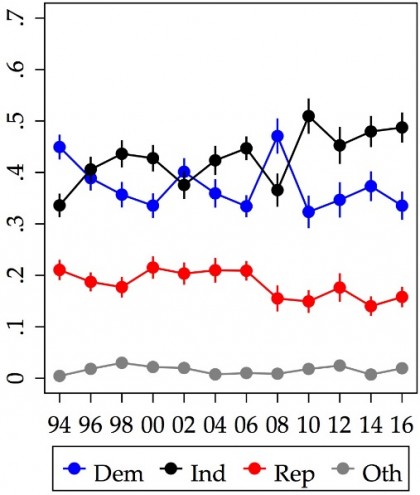The following article by Jeremy Rosner and Anna Greenberg is cross-posted from a Greenberg Quinlan Rosner Research Memo:
A new Greenberg Quinlan Rosner poll of the top 99 battleground congressional districts for 2018 shows voters in these swing districts strongly oppose any move by President Donald Trump to fire Special Counsel Robert Mueller, and even stronger majorities oppose the idea of the President pardoning either himself or his top aides and family members.
These findings are especially notable since the survey is based only on voters in battleground House districts – with 79 of the 99 districts now represented by Republican House members. That means the sample, and the results, lean more Republican than a full nationwide survey.
By a two-to-one margin, 60-29%, respondents say they would disapprove if President Trump and his team fire Special Counsel Mueller in the coming weeks; this includes 44% who strongly disapprove. Even in the 79 districts that are now Republican-held, the margin is essentially the same, 59-30%. Disapproval is even stronger among Independents, 66-23%.
A 64-33% majority already favors creating an independent, bipartisan commission to investigate issues linked to Russia and the 2016 election, and to report to the public. If the President were to fire Mueller, support for such a commission rises even higher, to a 72-22% majority. Again, the figure is essentially the same, 73-22%, among respondents in the 79 Republican-held districts. If Trump were to fire Mueller, a 67-26% majority across the full sample would also support having Congress establish a Special Prosecutor that President Trump could not fire.
An overwhelming 86-10% majority says Trump should not be allowed to pardon himself from criminal prosecution – a possibility the President and his team reportedly examined. Even among self-identified Republicans, an overwhelming 74-19% majority objects to the idea of the President pardoning himself. Respondents also oppose the President pardoning his aides and family members by a strong 69-27% margin.
Even with the Russia investigation in its early days and the election more than a year off, there is already a notable enthusiasm edge among Democrats in these battleground districts. Across all these districts, 61% of self-identified Democratic voters say they are extremely enthusiastic about voting for Congress in 2018 (10, on a 0-10 scale), compared to only 48% of self-identified Republicans.
These results are based on a survey of 1,000 telephone interviews with likely 2018 voters in the country’s 99 most competitive congressional battleground districts (79 currently Republican held; 20 Democratic held), conducted July 27 to August 1, 2017. Half of the interviews were conducted by landline, and half by cell phone. The results are subject to a margin of error of +/- 3.1%. The survey was designed and conducted by Greenberg Quinlan Rosner, and funded by a coalition including: American Bridge; End Citizens United; MoveOn; and Stand Up America.




